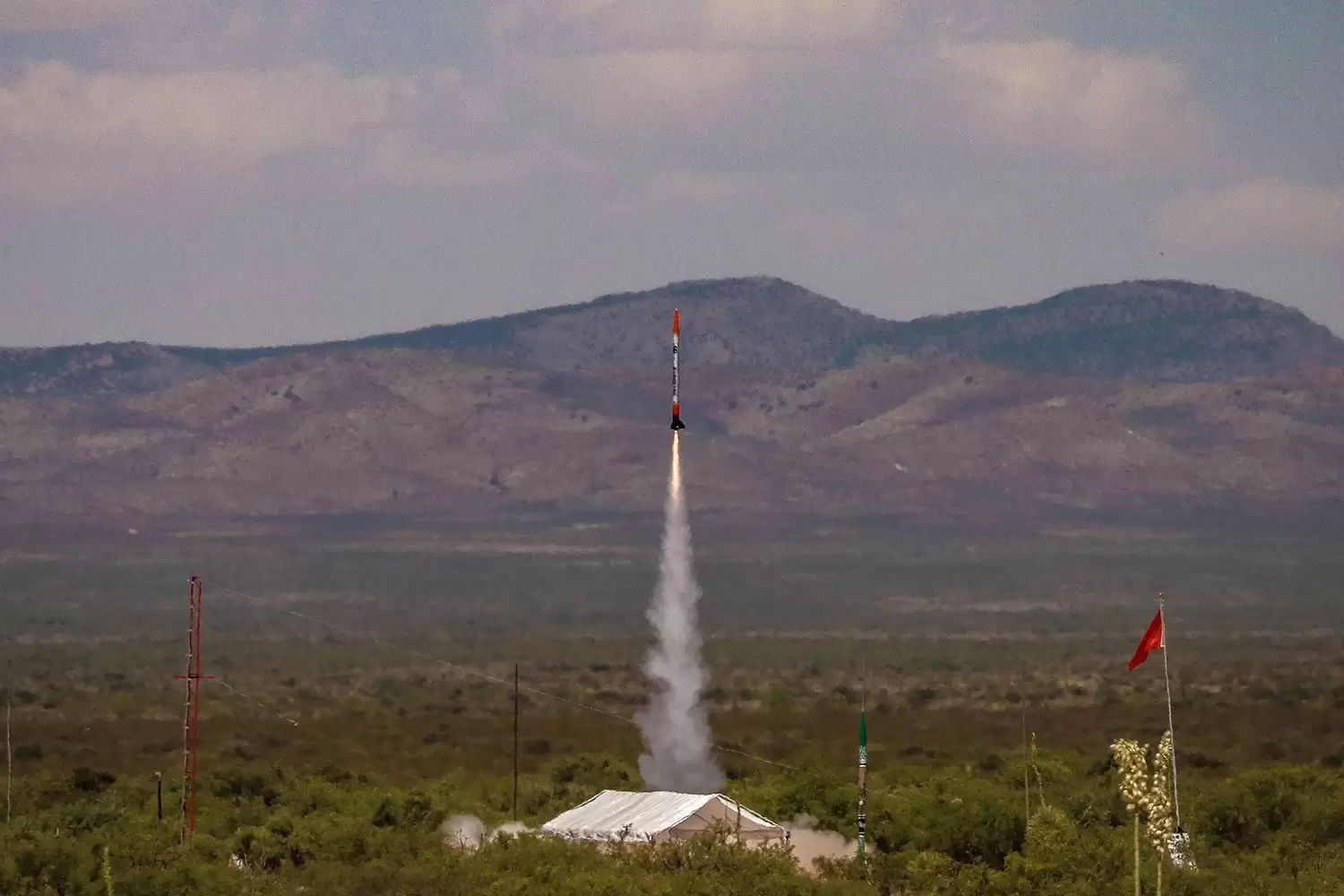The University of Sydney rocket team has placed first in their category in the world’s largest intercollegiate rocket engineering conference and competition.
More than 122 teams from universities around the world converged in the US state of New Mexico last month for the annual Spaceport America Cup rocket launch competition.
The University of Sydney rocket team was Australia’s sole representative this year, and they made sure to leave an impression on the other contestants and judges. The team’s rocket, Silvereye, reached an altitude of 3056 m to beat out 51 other teams in the 10,000 ft (3048 m) commercial of-the-shelf (COTS) category, which required rockets to have a commercially built motor.
Their rocket reached a top speed of Mach 0.8 – 80 per cent of the speed of sound. Silvereye was equipped with three live-action cameras and a miniature satellite for a payload.
Fourth year aerospace engineering student and Silvereye Chief Engineer Mitchell Galletly said that attending the cup was one of the founding goals for the team, and it challenged him to apply hands-on engineering principles outside of his lectures.
“As part of the Silvereye project, I developed a thorough understanding of systems engineering, both practically through the direct management of the team and project, as well as theoretically through an advanced engineering project under the supervision of a former senior European Space Agency avionics engineer,” Galletly said.
“Competing against and interacting with a global cohort of universities, as well as working alongside leading aerospace organisations, has granted me new insights into the international aerospace industry that will benefit my professional life.”
Accelerating to success
This prestigious win didn’t come easy, as it took more than 30 undergraduate students over a year to design, analyse, redesign, construct and test the rocket to make it ready for launch. The final product was a 3-metre-long, 45 kg silver bullet, with 2300 N of peak thrust.
The team first tested the rocket in regional New South Wales, where it climbed to more than 3000 m on its maiden voyage. They then replicated this at the Australian Universities Rocket Competition held in Queensland earlier this year.
In the Spacesport America Cup, the team was the only one to receive perfect scores for both the project report and design implementation. Their final tally was 1146.9/1000, with 100 bonus points for launching early and 50 bonus points for its 2U CubeSat payload, which was built by senior students. This means they only lost a total of 3.1/1150 possible points for going 9 m over the category’s target height.
This score was also the highest score of any team from the past three years.

“Silvereye is able to fly any standard 2U sized CubeSat, allowing us to achieve a variety of missions such as test flying student-built satellites or even performing low gravity experiments,” Galletly explained.
“We have used a systems engineering approach to design our rocket from the ground up in order for it to be safe, reliable and customisable.”
The team also received an honourable mention in the Team Sportsmanship category, having used their expertise to help other teams launch and recover their rockets.
Team president André Bauer said this win represents the biggest achievement for university student rocketry in Australia’s history, and the team looks forward to collaborating with other organisations and universities as they continue their research activities into rocket design.
He said they also look forward to more Australian teams being founded and joining them at the cup next year.
“Creating Silvereye … has been a long, challenging and ultimately extremely rewarding experience for our team of student engineers,” he said.
“As the team president, I couldn’t be prouder of the dedication, teamwork, safety-first attitude and exceptional technical skill with which the team has executed this project. We are proud to have represented our country well and are ecstatic to have shown Australian student aerospace engineering can hold up to the world’s best.”